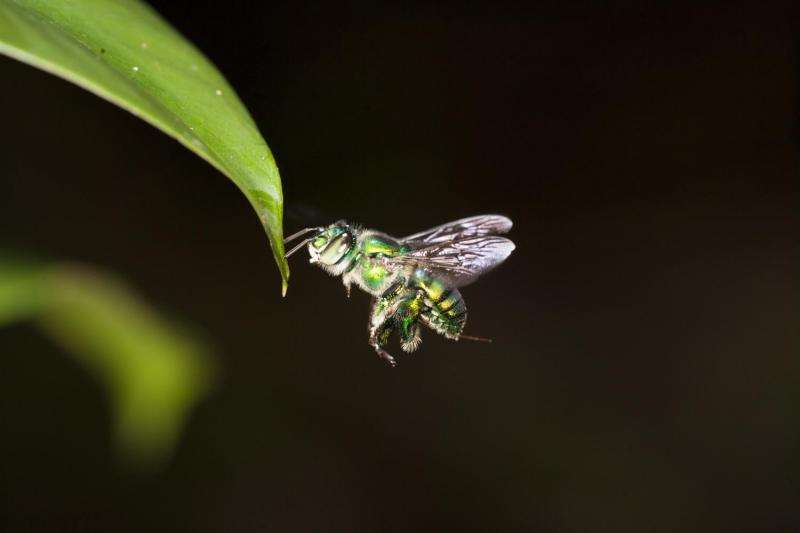Insect eyes enable drones to fly independently

After studying how insects navigate through dense vegetation, researchers at Lund University in Sweden have come up with a system that can be applied to flying robots. By adapting the system to drones, they can be made to adjust their speed to their surroundings and fly on their own- completely without human intervention and control.
The breakthrough was made by vision researchers Emily Baird and Marie Dacke at the Department of Biology in Lund. Among other things, their research shows how bees that fly through dense forests assess light intensity to avoid other objects and find holes in the vegetation to enable them to navigate safely.
The ability to avoid collisions is crucial to animals and insects that live in environments with many obstacles. The Lund researchers' results show that insects, such as the green orchid bee in the Panama rainforests, apply a strategy where they assess the light intensity to navigate quickly and effectively without crashing. They are guided by the intensity of the light that penetrates the holes in leaves to determine whether a particular hole is sufficiently large for them to fly through safely without hitting the edges.
"The system is so simple - it's highly likely that other animals also use light in this way. The system is ideal for adapting to small, light-weight robots, such as drones. My guess is that this will become a reality within five to ten years", says Emily Baird.
Before it is realised, the biological results from the rainforest must be transformed into mathematical models and digital systems that make it possible for robots to fly in complicated environments completely without human intervention.
"Using light to navigate in complex environments is a universal strategy that can be applied by both animals and machines to detect openings and get through them safely. Really, the coolest thing is the fact that insects have developed simple strategies to cope with difficult problems for which engineers have still to come up with a solution", says Emily Baird.
The research findings are presented in an article in the scientific journal Proceedings of the Royal Society B.
More information: Emily Baird et al. Finding the gap: a brightness-based strategy for guidance in cluttered environments, Proceedings of the Royal Society B: Biological Sciences (2016). DOI: 10.1098/rspb.2015.2988
Journal information: Proceedings of the Royal Society B
Provided by Lund University




















